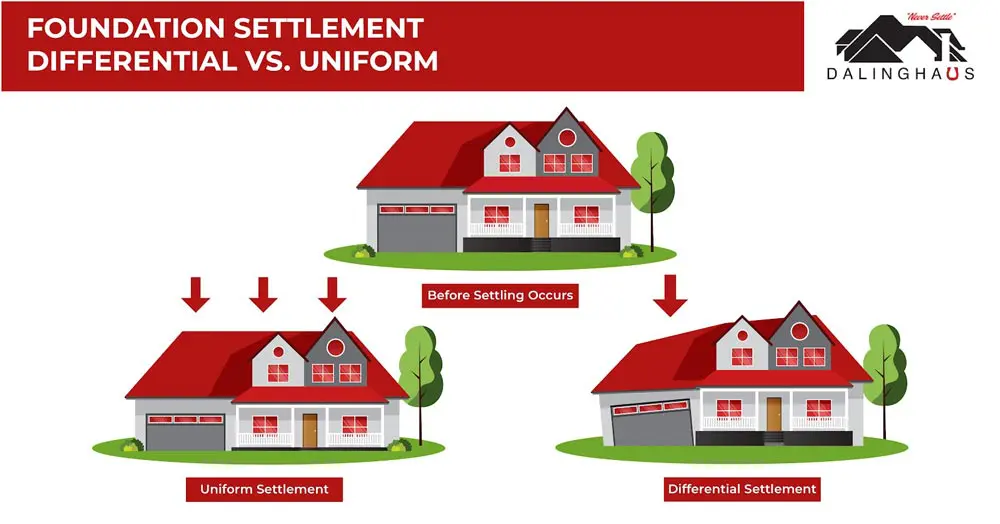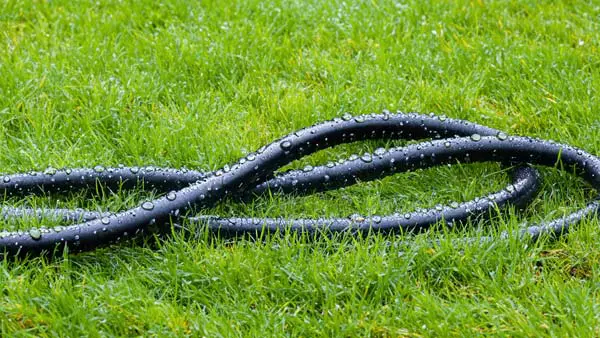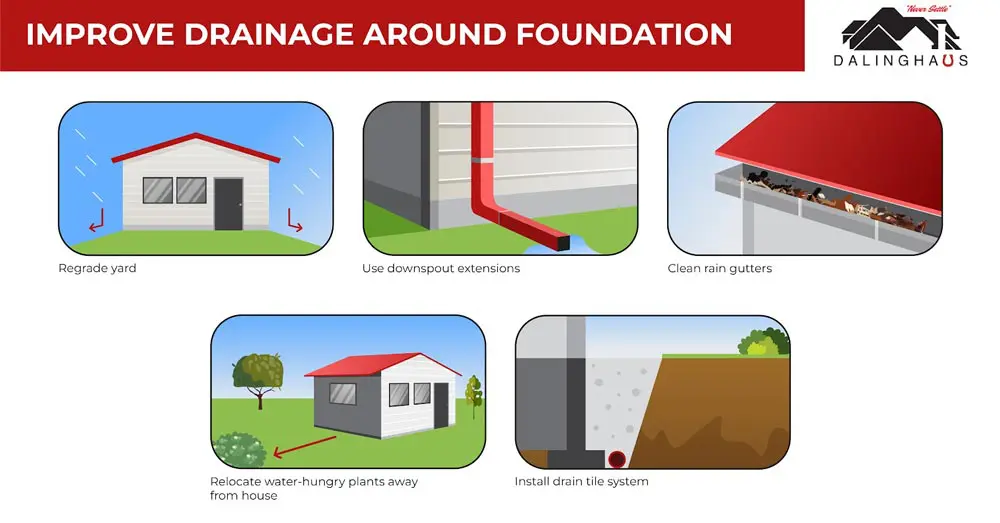Searching for information about soil pulling away from a foundation? If so, you’ve landed on the right page because that’s what this article is about. We’re going to review why soil pulls away from a foundation, signs the soil around your home’s foundation is too dry, how to rehydrate the soil properly, and more.
Why Does Soil Pull Away From a Foundation?
Soil pulling away from the foundation of a building is common during arid conditions such as droughts. The consequences of soil pulling away from a foundation can be significant. It can cause the foundation to shift, leading to structural damage manifesting as wall cracks, uneven floors, and doors and windows that no longer open and close properly.
Problems Associated With Soil Pulling Away From a Foundation
If the soil is pulling away from the foundation, it means the soil is parched, and because of that, it’s shrinking. When this happens, voids can form under the foundation. If the foundation settles into these voids, you’ll have a phenomenon called “differential settlement,” or when a foundation settles into the ground unevenly.

Differential settlement puts a lot of stress on a foundation, and if it isn’t promptly fixed, it will cause severe structural damage eventually.
Dry soil that has pulled away from a foundation allows rainwater to come into direct contact with the foundation. This can lead to a host of problems.
Another problem associated with soil pulling away from the foundation is instability. This happens because there’s no longer any soil offering resistance to the foundation. This makes it easier for the foundation to shift and move around.
Signs the Soil Around Your Home’s Foundation Is Too Dry
Signs the soil around your home’s foundation is too dry include the following:
- The ground will be cracked.
- Vegetation will turn yellow, and leaves will become brittle to the touch.
- The soil may appear powdery and loose, indicating a lack of moisture content.
Usually, you’ll know when the soil around your home is too dry. If the weather has been hot and dry and you haven’t watered your yard, the soil is probably too dry.
For more information, see How to Prevent Foundation Problems When There’s Clay Soil Around a Foundation.
Solution: Rehydrate the Soil Around Your Foundation
The best way to prevent soil from pulling away from a foundation during dry conditions is to maintain an adequate moisture level in the soil. Here’s how you can do that:
Use a soaker hose

A soaker hose is a flexible hose that evenly distributes water directly to the soil. This method allows for slow and steady hydration, which is ideal for preventing soil erosion and other issues that may arise from overwatering.
It’s essential to ensure the water is distributed evenly and doesn’t pool in certain areas, as this can lead to uneven moisture levels and potential damage to your foundation. Also, watering too close to the foundation can lead to oversaturation, which can also cause issues. It’s better to place the soaker hose several feet from the foundation and let the moisture work its way toward the foundation laterally.
The frequency and amount of water needed will depend on several factors, including climate, soil type, and drainage conditions. It may be helpful to consult a professional landscaper or foundation specialist to determine the best watering plan for your situation. By taking the necessary steps to hydrate the soil around your foundation, you can help ensure the longevity and safety of your home.
Proper Soil Hydration Helps Prevent Foundation Trouble
Believe it or not, most foundation problems are caused by water. There will be trouble when there’s either too much or too little water in the ground around the foundation. Therefore, you can go a long way toward preventing problems by controlling groundwater around your home. Here are some ways to do that:
- Regrade your yard – One helpful technique for controlling groundwater is regrading the yard so it slopes away from the foundation. This helps ensure that any water accumulating in the soil will naturally flow away from the house rather than towards it.
- Clean gutters regularly – Similarly, homeowners should keep gutters clean and free from debris, as overflowing gutters can cause water to accumulate around the foundation and seep into the soil.
- Use downspout extensions – Using downspout extensions is another effective way of preventing groundwater from pooling around the foundation. These extensions should direct water at least six feet from the house before release.
- Keep trees away from the foundation – Homeowners should also be vigilant about keeping trees away from the foundation. Some trees have extensive root systems capable of “drinking” large quantities of water from the soil. This can lead to the formation of voids in the ground under the foundation, compromising its stability over time.
- Install a drain tile system – A drain tile system consists of a network of perforated pipes installed around the foundation’s perimeter at the footing level. These pipes help collect and redirect groundwater away from the foundation, reducing the likelihood of foundation trouble.

If you’re concerned about the moisture content of the soil around your home’s foundation, contact us today to schedule an evaluation. We serve Southern California, Arizona, and Nevada.






